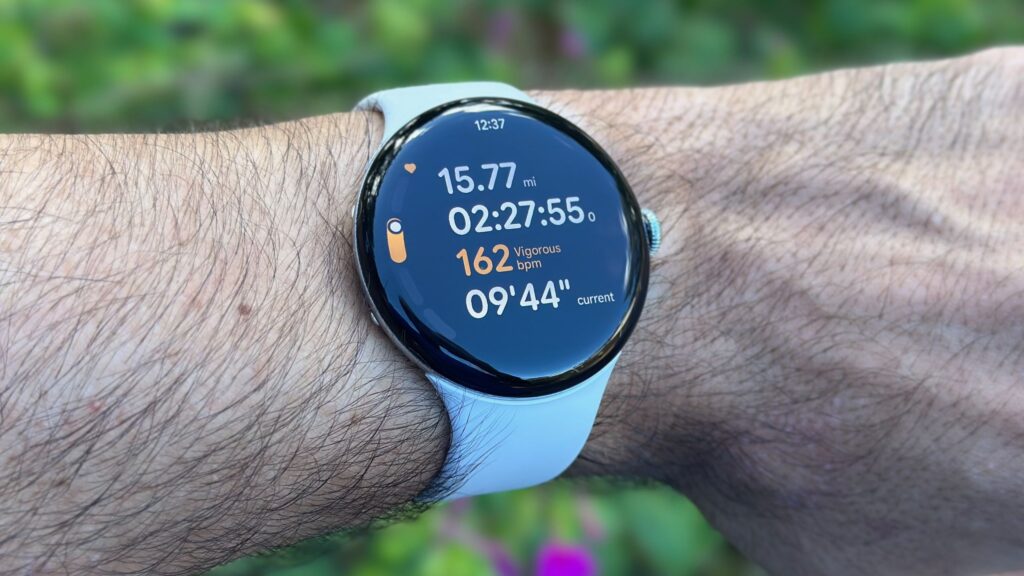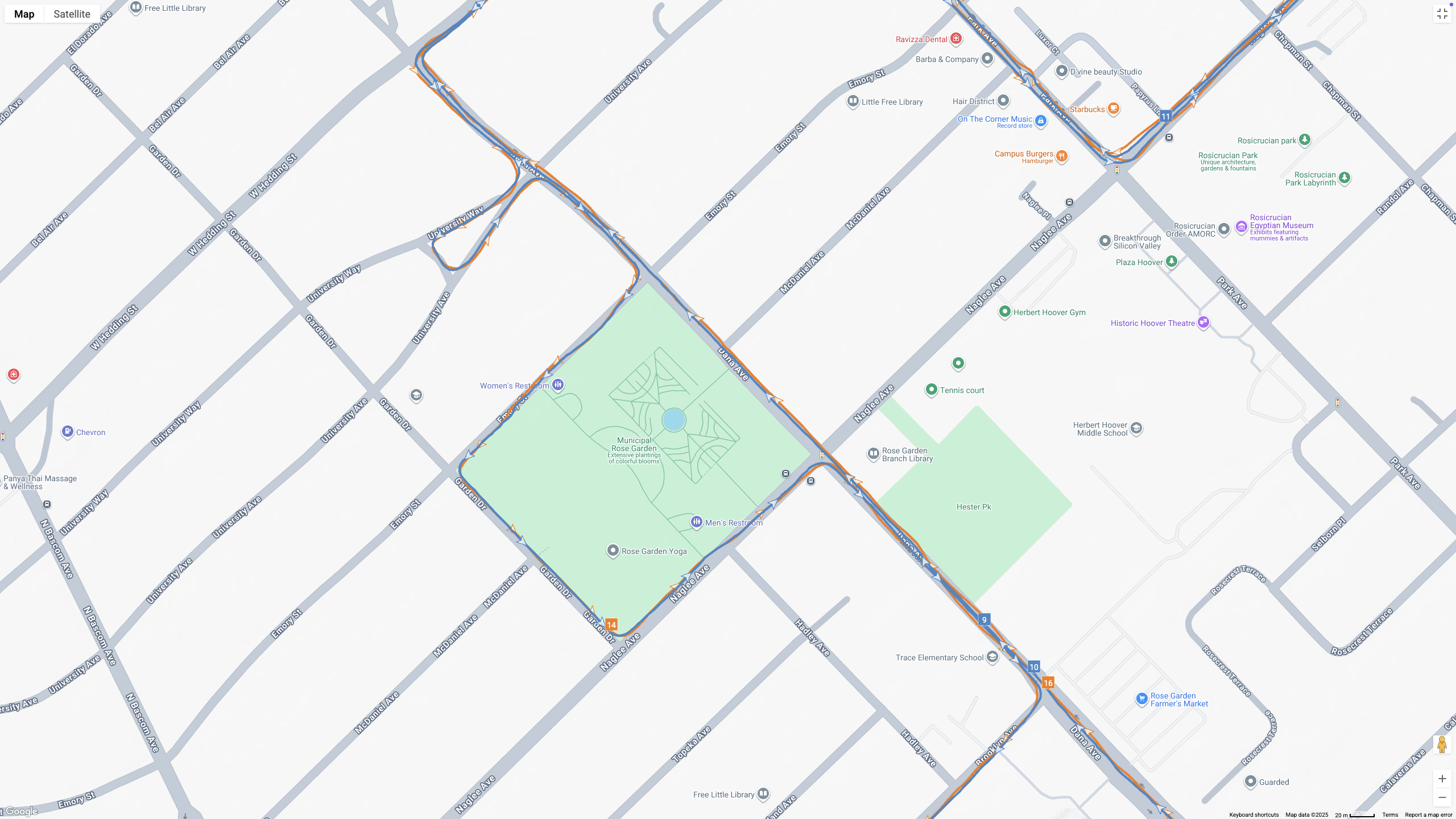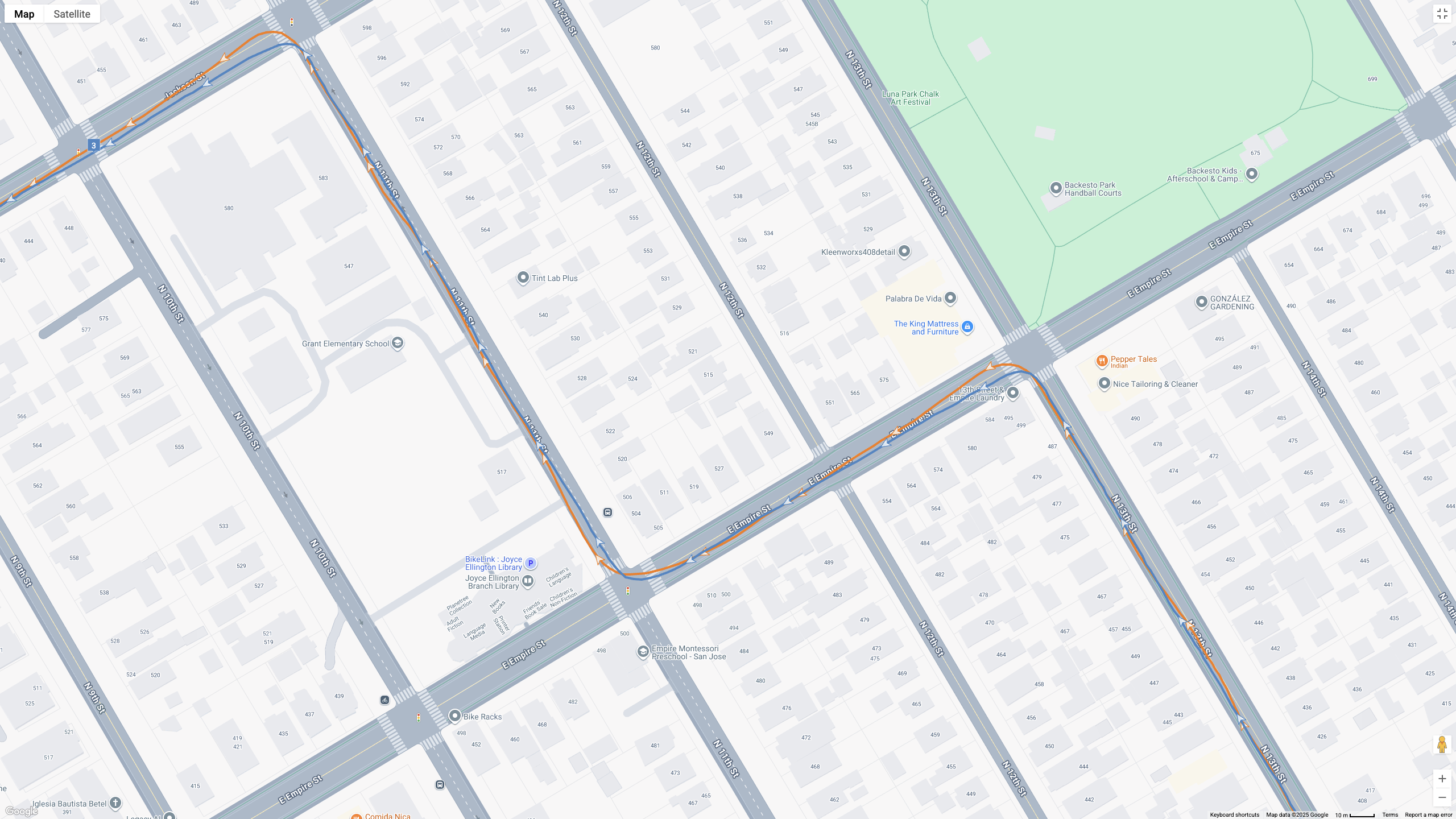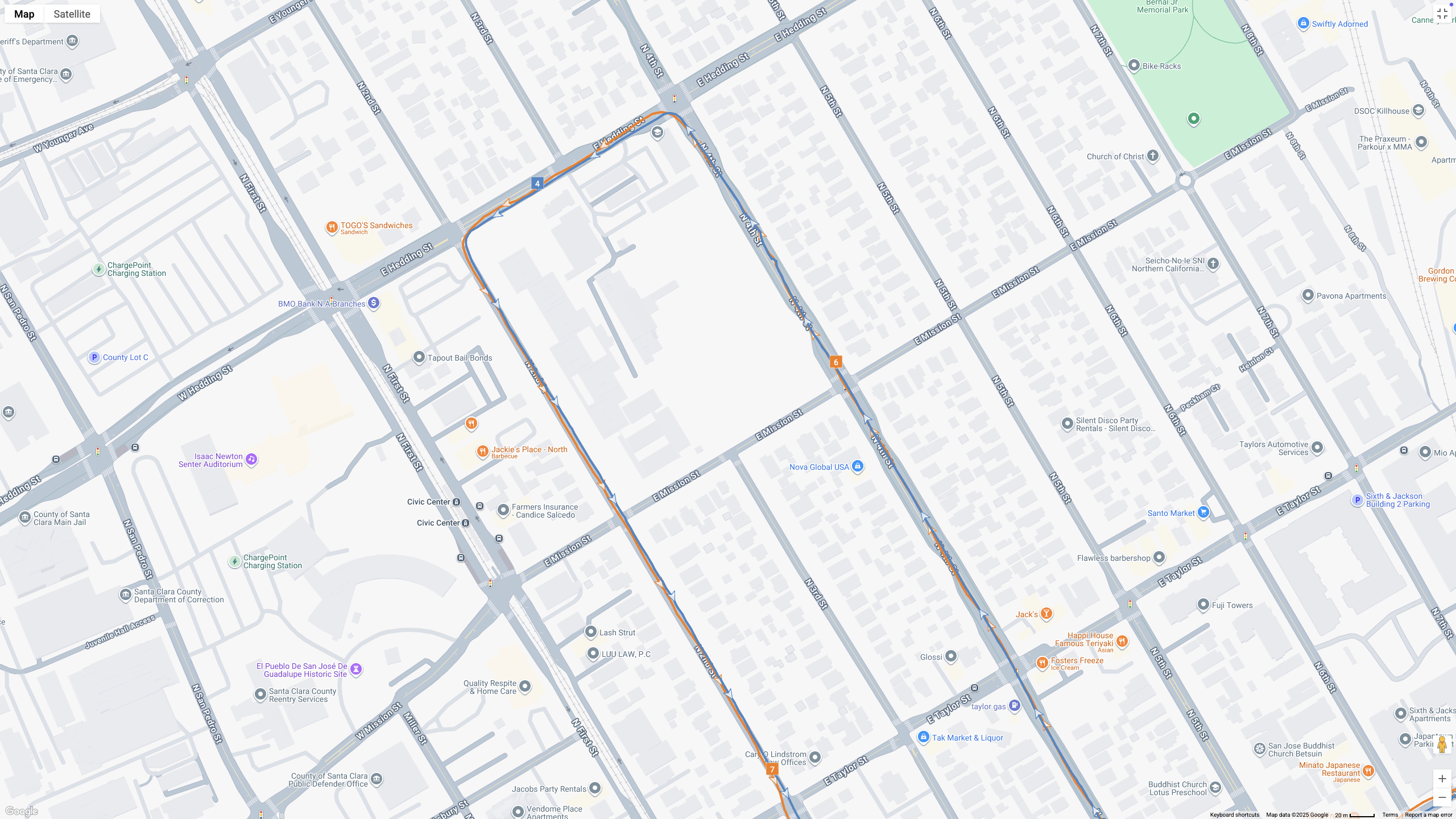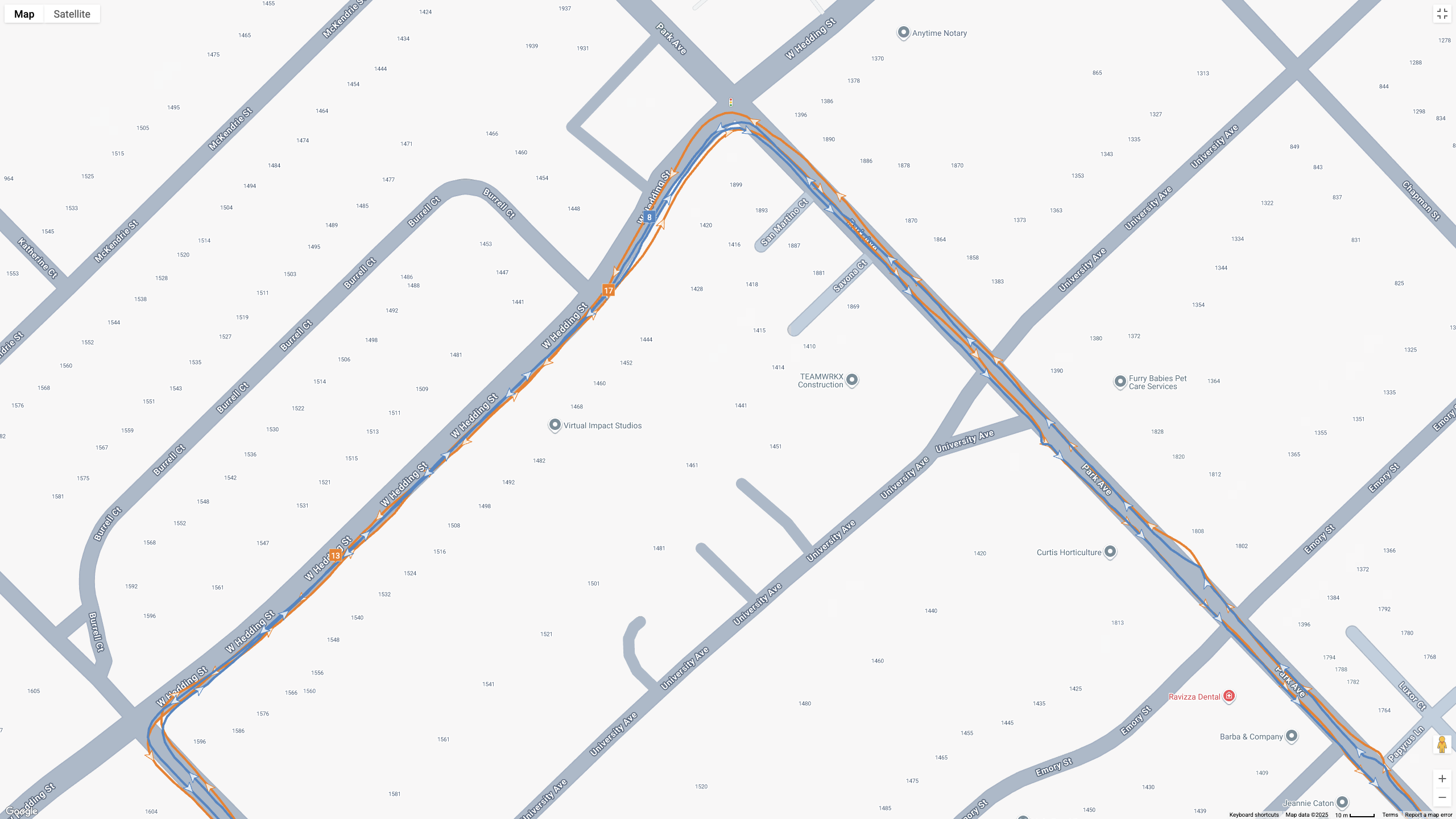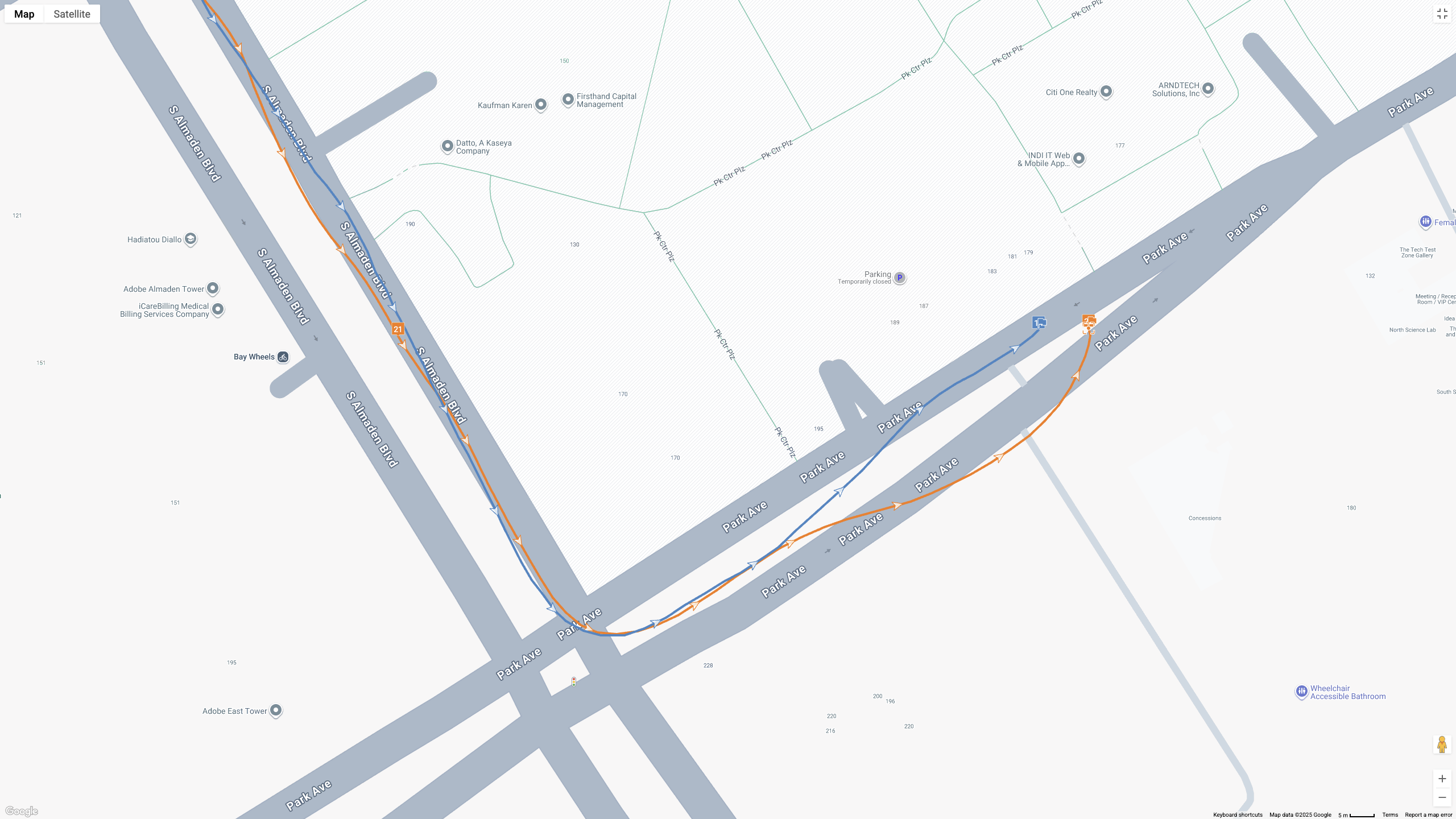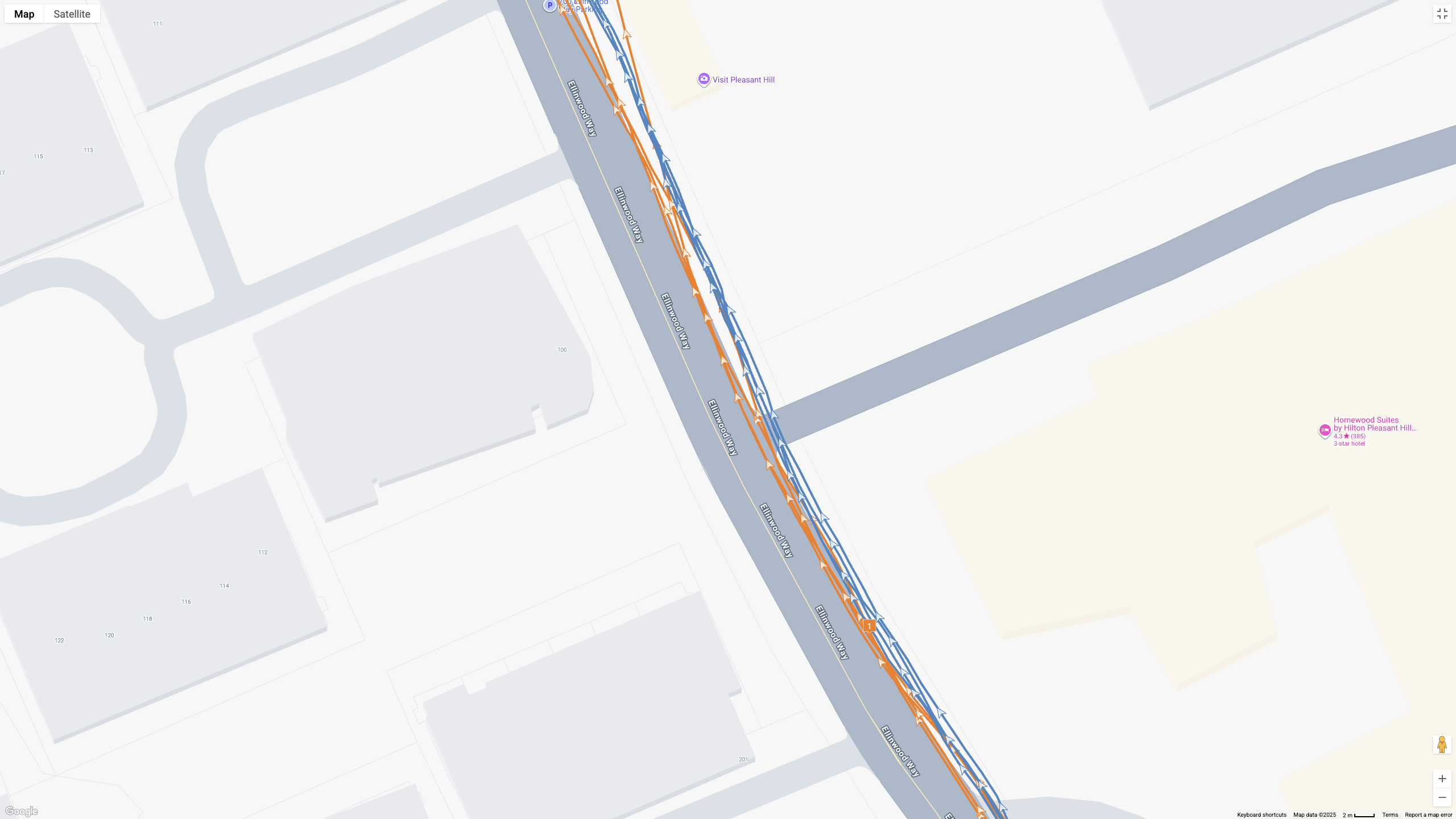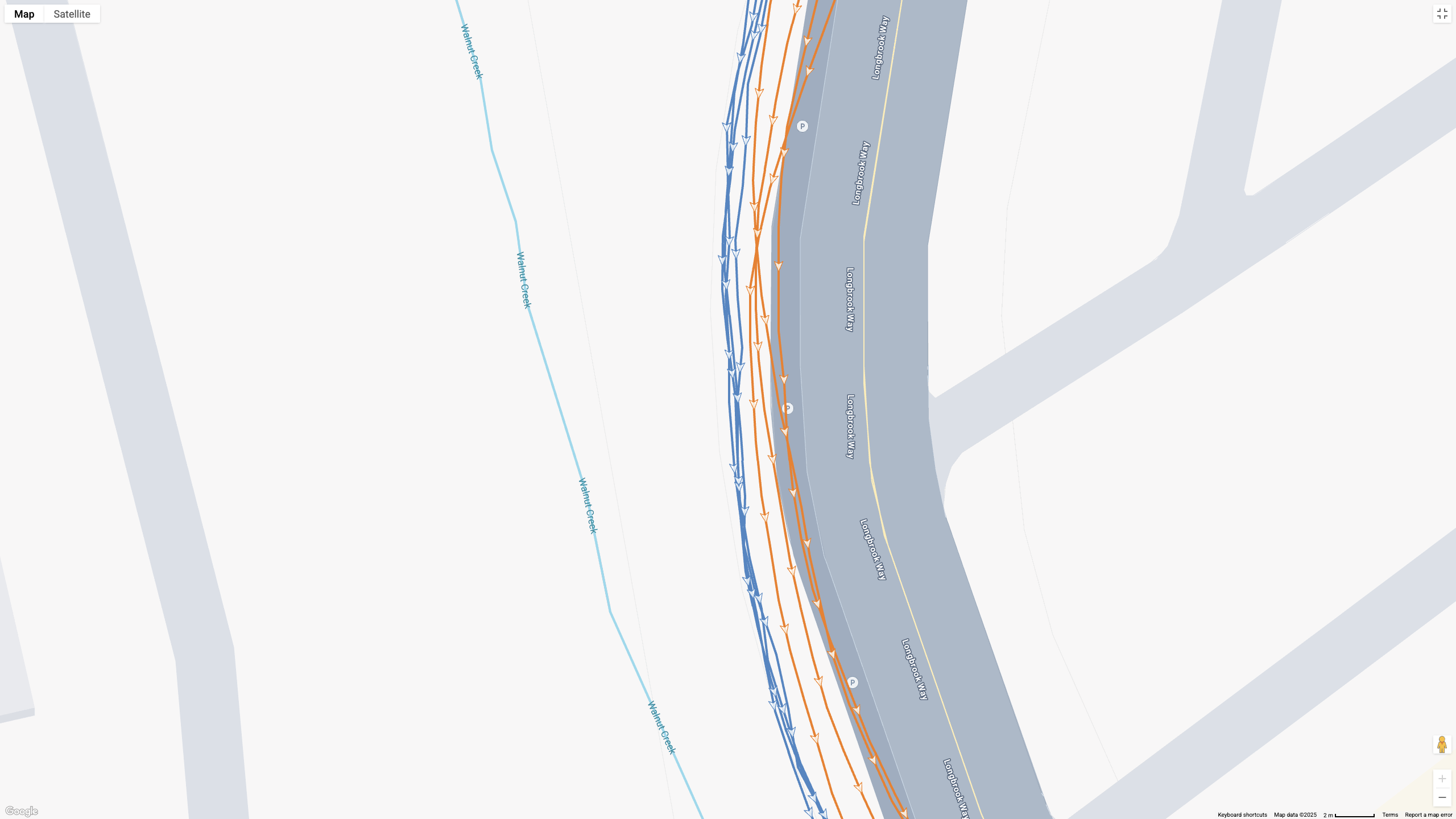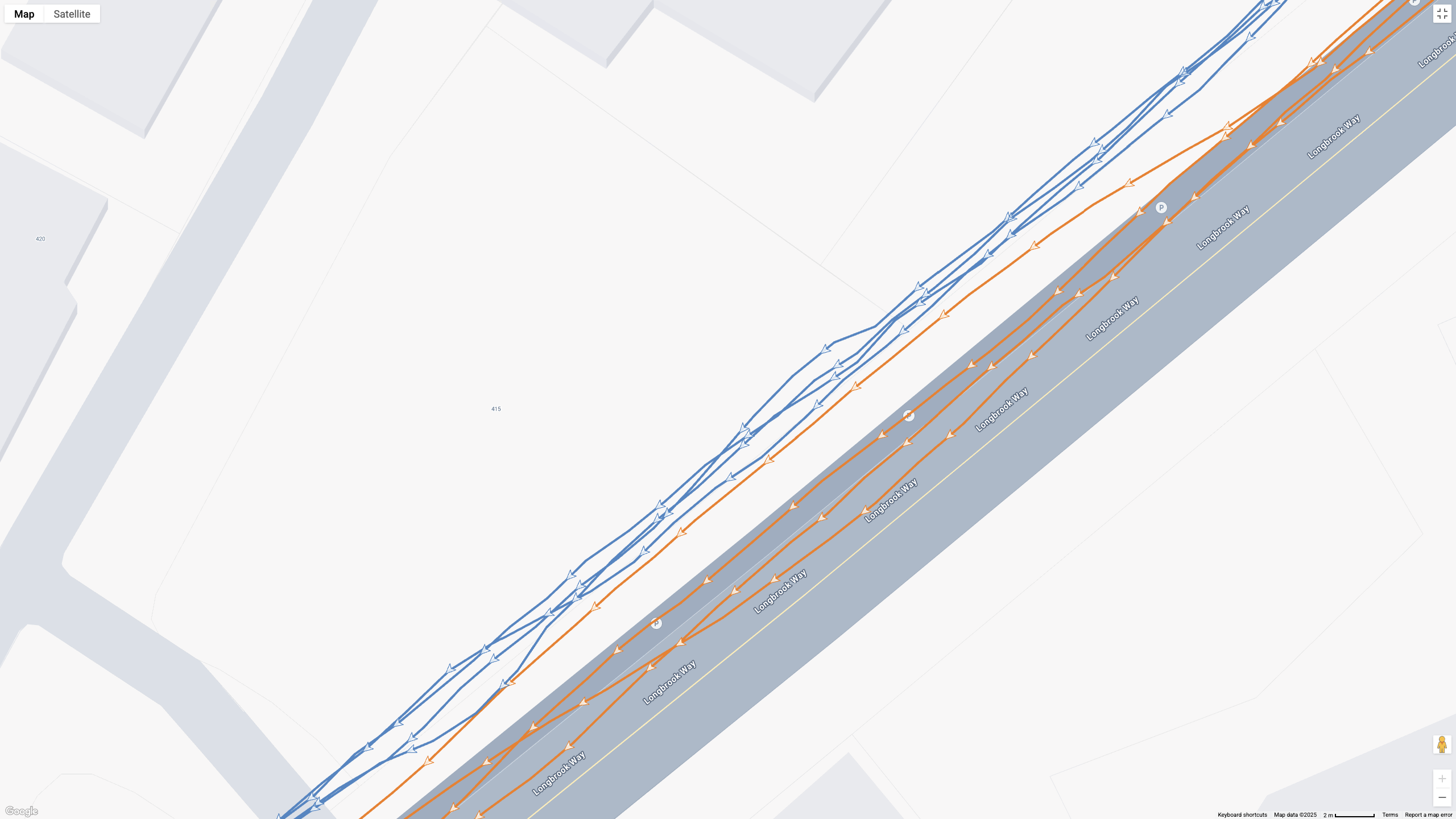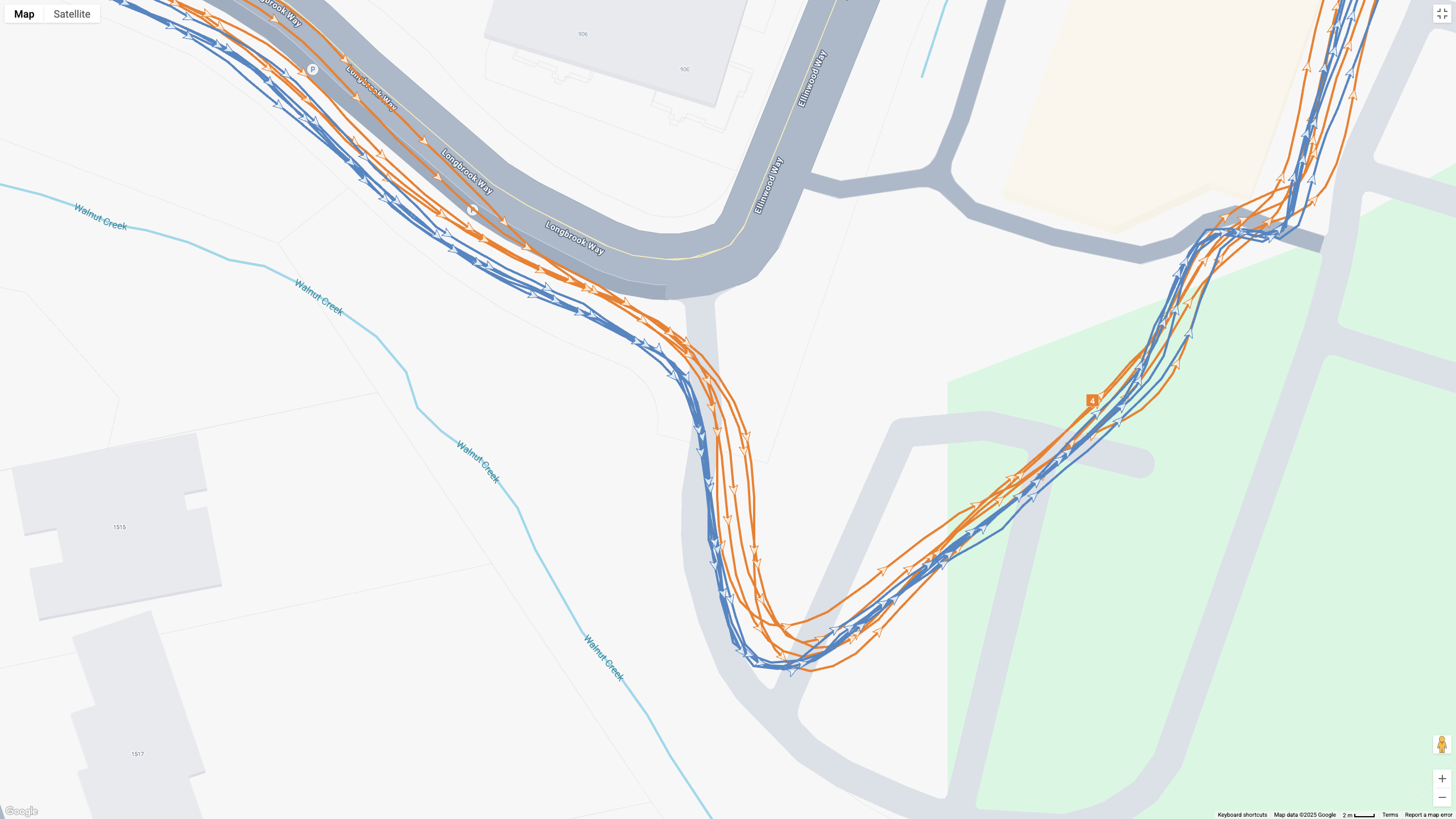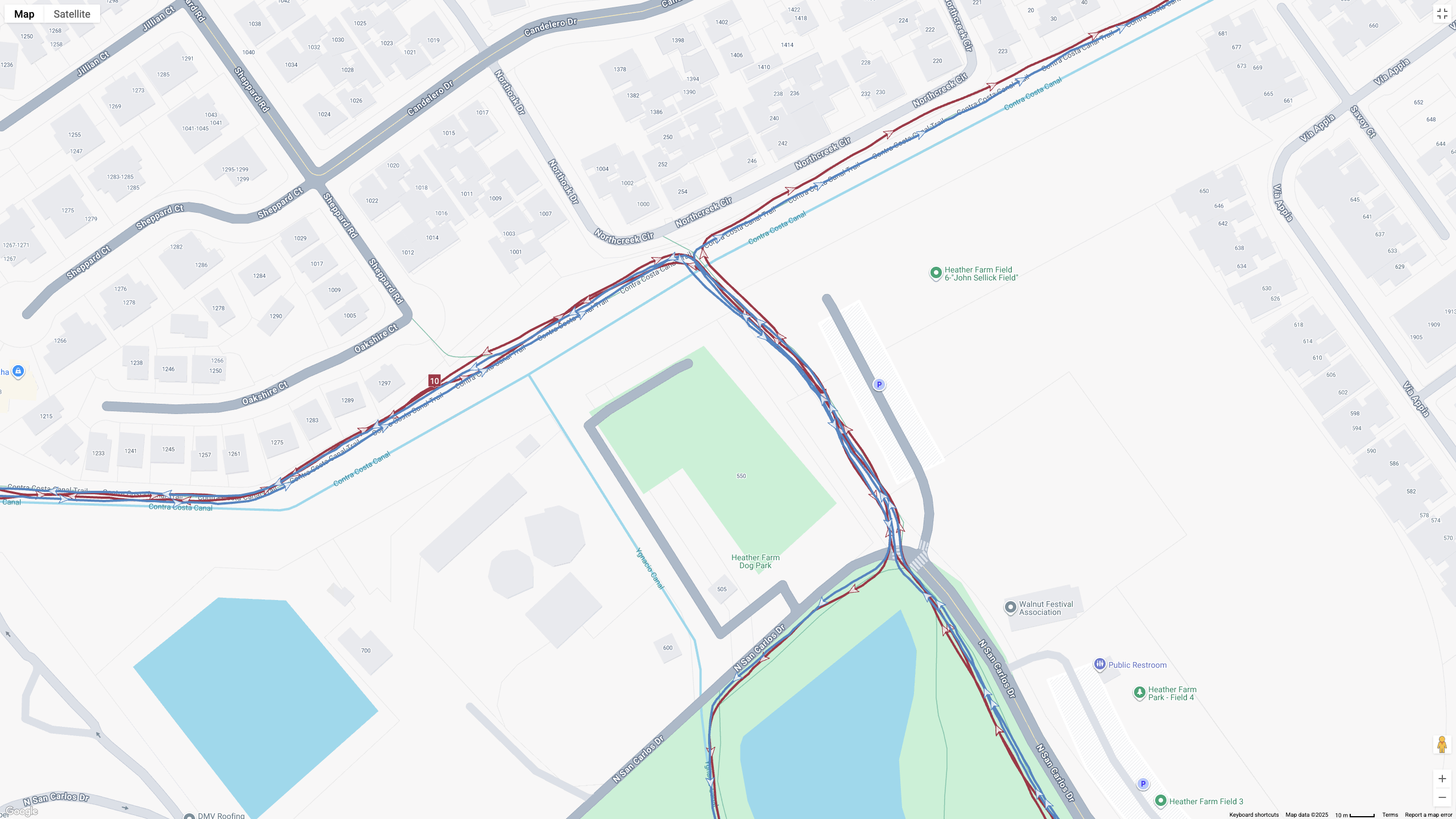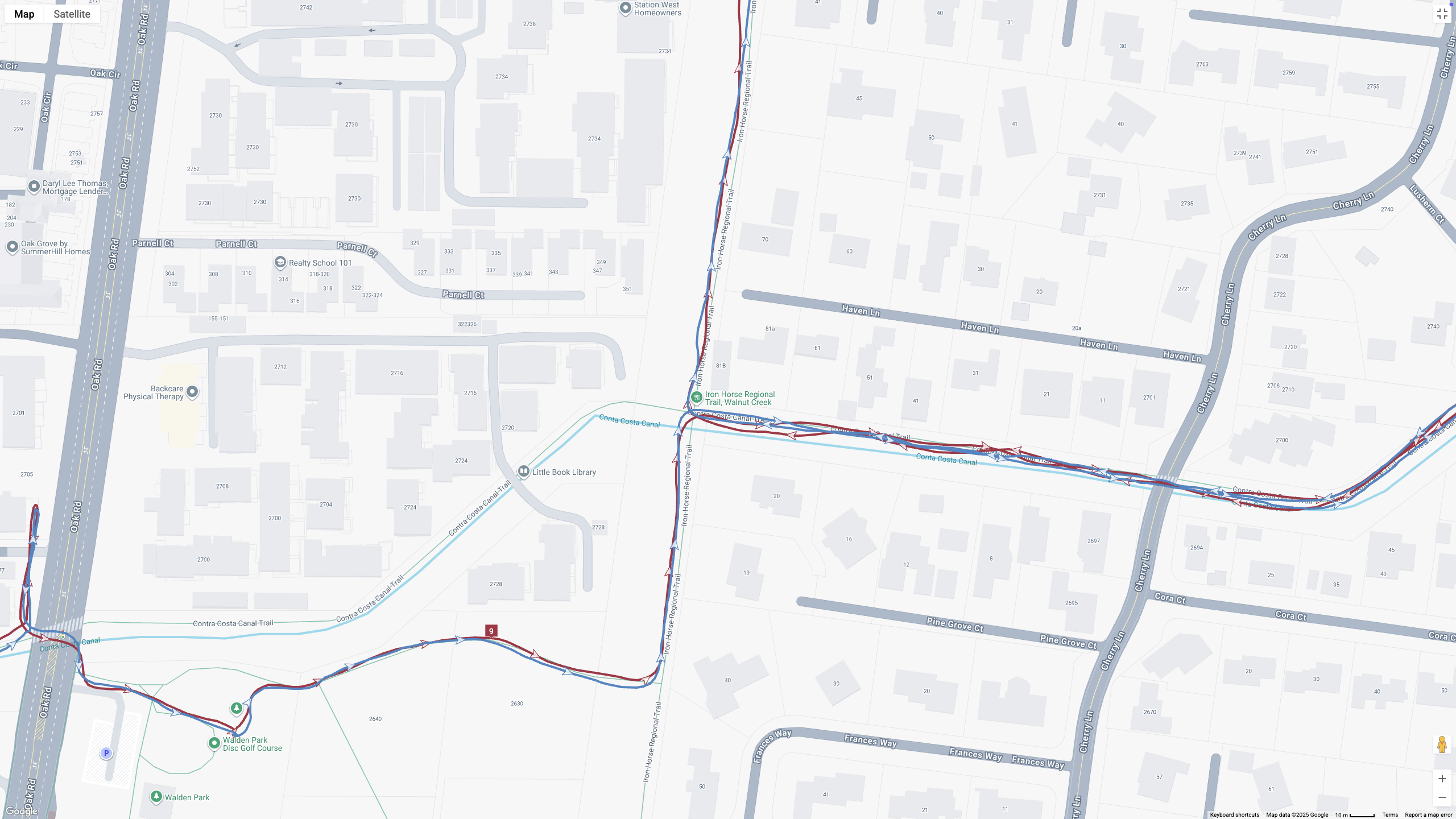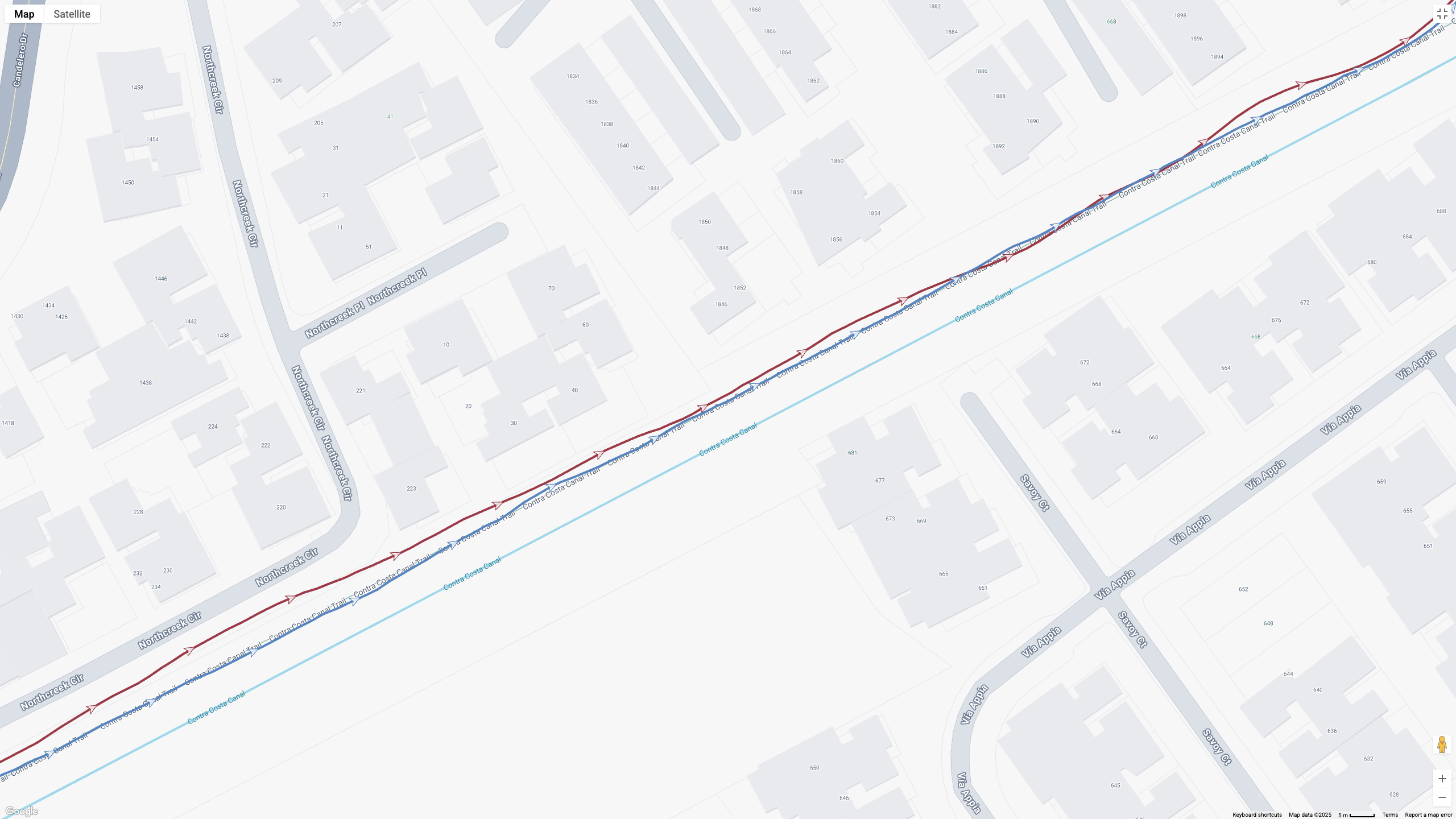Sunday Runday

In this weekly column, Wearables Editor Michael Hicks discusses the world of running watches, fitness apps, and training trends, in his quest to get faster and more fit.
The Pixel Watch 4 is Google’s sportiest smartwatch yet. As someone who’s tested nearly every smartwatch and fitness watch brand, I put the Watch 4 through its paces to see how well its accuracy holds up against a premium Garmin watch, judging when Fitbit beats the competition and when it falls short.
I took the Pixel Watch 4 out for a half-marathon and a second 19-mile run — along with shorter runs and a hike — comparing its HR accuracy against a chest strap and its GPS accuracy against the dual-band Garmin Forerunner 970.
I also compared stats like step count, elevation, and running form, tested how Google’s new activity detection works, and decided whether the Watch 4’s new 3,000-nit display and improved battery life make a real difference.
You may like
I can’t fully judge the Watch 4 fitness experience until the Gemini-backed Fitbit coach arrives later this month. But it’s fair to say the Watch 4 is a surprisingly strong fitness watch option — even if it’s still missing some essentials that serious athletes need.
Today’s best Google Pixel Watch 4 and Garmin Forerunner 970 deals
GPS accuracy
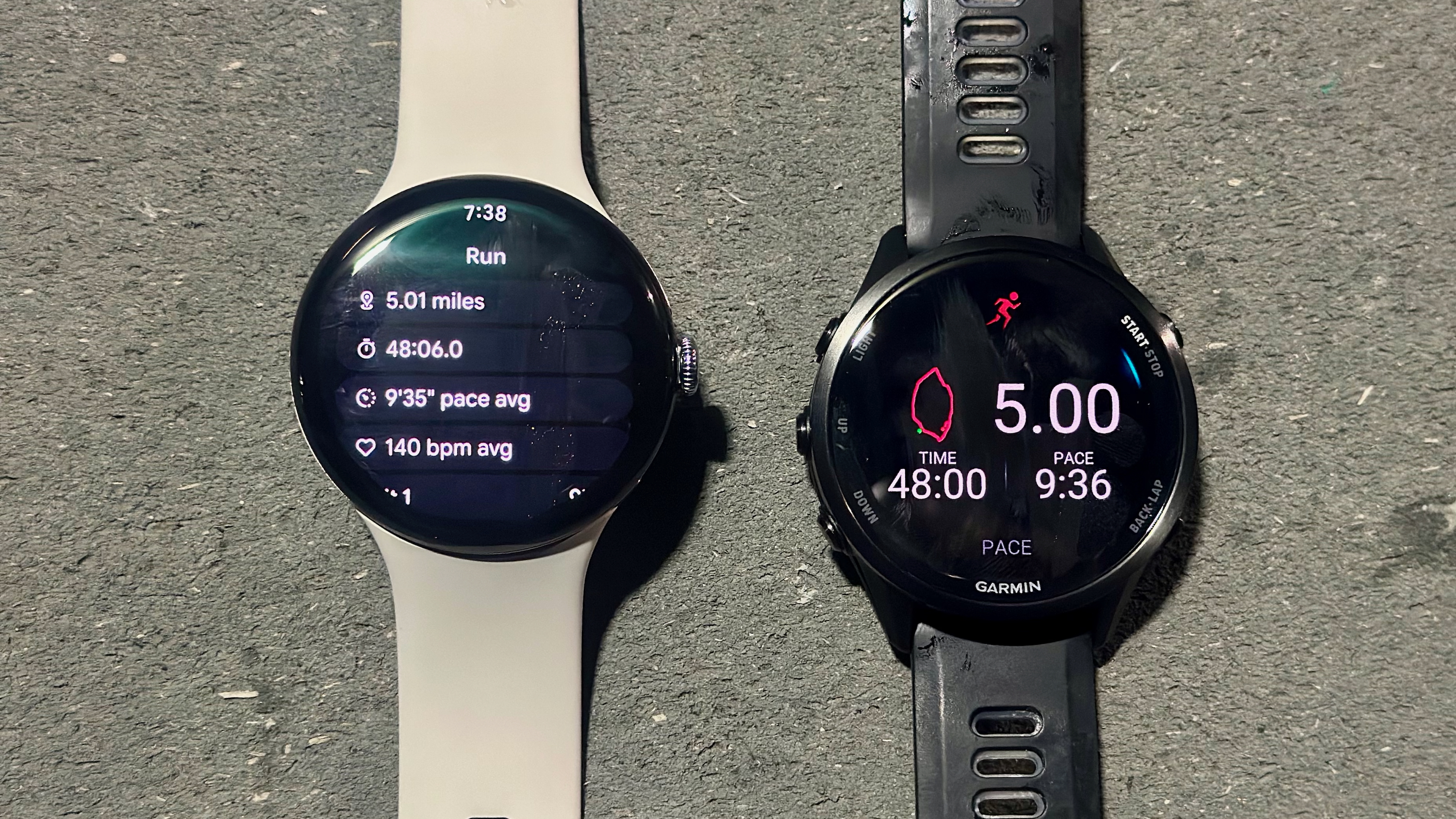
Anyone who read my Pixel Watch 4 hands-on impressions saw my initial GPS and HR accuracy results, but I’ll go into more depth here. The Pixel Watch 4 defaults to dual-frequency GPS, but also manages to be incredibly efficient at it. Google hasn’t shared its methods, but I’d guess it’s similar to Garmin’s SatIQ mode, pinpointing with L5 signals when the L1 signal is disrupted.
During a half-marathon race in downtown San Jose, the Pixel Watch 4 showed mile-long stretches with very accurate tracking, with the two watches’ results closely overlapping. But it wasn’t perfect, as some of the slides below show (click the box for a closer view):
I also noted plenty of moments where the Watch 4’s GPS line curved significantly off of my route before returning, possibly due to reflected signals from tall buildings. More subtly, the Watch 4 is slower to react to any 90-degree turn, with a much wider loop than I actually took. And it didn’t do the best at staying straight under underpasses.
Despite its struggles, the end result wasn’t far from Garmin’s, which had its own occasional struggles with tall buildings but was more faithfully on track.
For my next test, I ran several miles on the same neighborhood loop. Google and Garmin stay parallel — likely because they’re on my left and right wrists — but it’s fair to say that Garmin’s results stay more consistently on the same line, while Google’s line strays much more, despite there being few signal blockers nearby aside from some trees.
Again, though, the final result was 5.00 vs. 5.01 miles (16m), and you’d be surprised how many dual-band GPS watches stray slightly off track. The Pixel Watch 3 tended to be significantly worse, particularly for hikes.
I recently ran 19 miles with the same two watches, plus a third dual-band COROS watch. The final result: Garmin measured 0.02mi more and COROS 0.01mi more than Google, all with the same 9:23/mile average. I’ll spare you 19 miles’ worth of screenshots, but this was the Watch 4’s best tracking result, with only the occasional sections where it strayed off-path.
On a related note, the Pixel Watch 4’s elevation tracking was only 0.8 feet off of Garmin’s for the 19-mile run, though the gap was 3m for my half-marathon. I didn’t get a chance to climb a mountain or anything, but I generally trust its results.
Overall, the Pixel Watch 4’s GPS accuracy is as dependable as I hoped. It’s also more efficient than I expected, only using about 7.5% of my battery per hour of tracking for a couple of runs. It guzzled more battery during my 19-mile run, hitting closer to 12% battery used per hour, but still had more than enough juice for a long activity.
HR accuracy
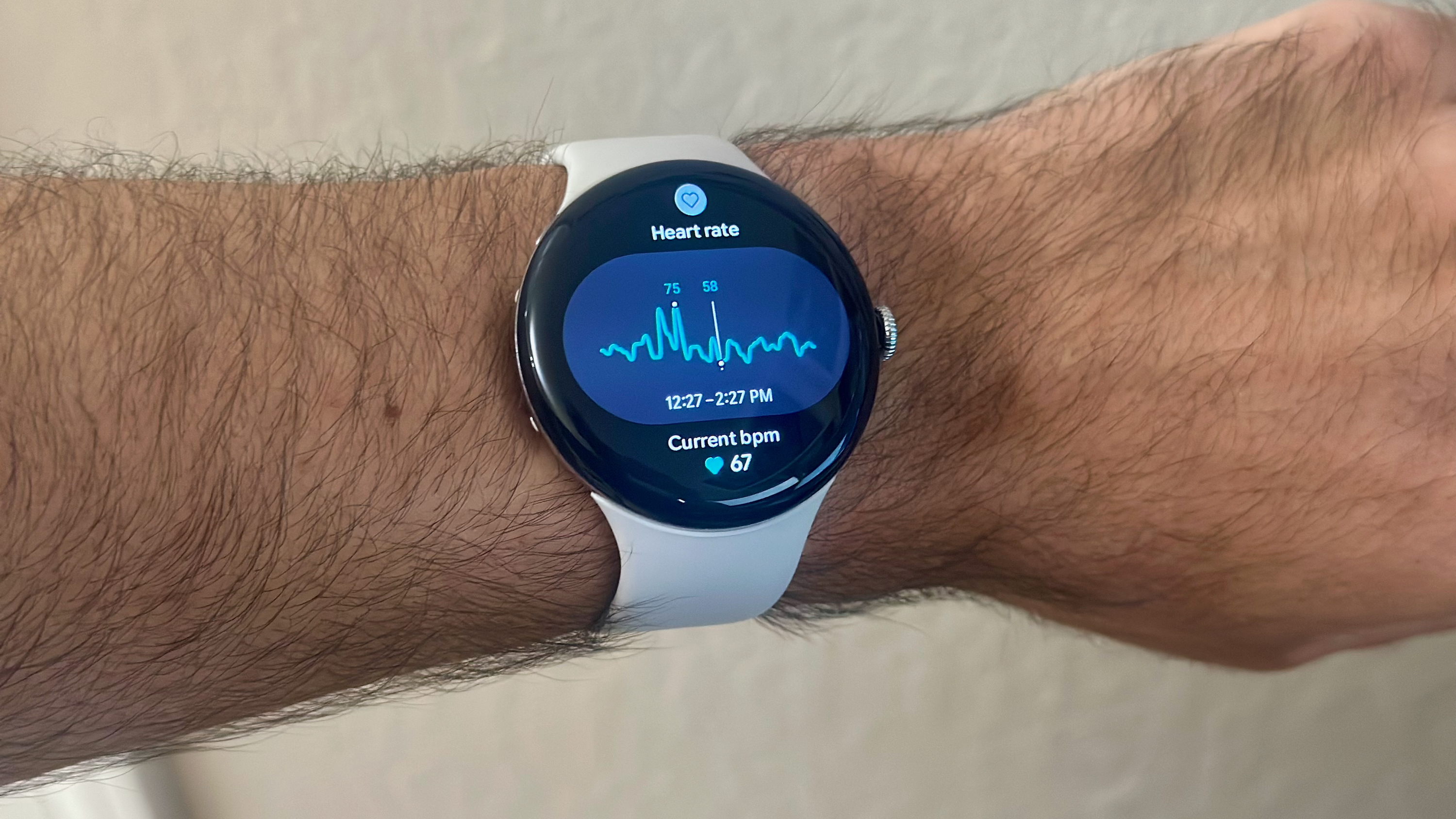
Google promised that the Pixel Watch 3 had its “most accurate” HR algorithm, and didn’t bring it up with the Watch 4, so we can safely assume it’s unchanged. And that shows in the actual results: For whatever reason, Google’s HR average always falls 1 bpm short of other chest, arm, or wrist-based sensors.
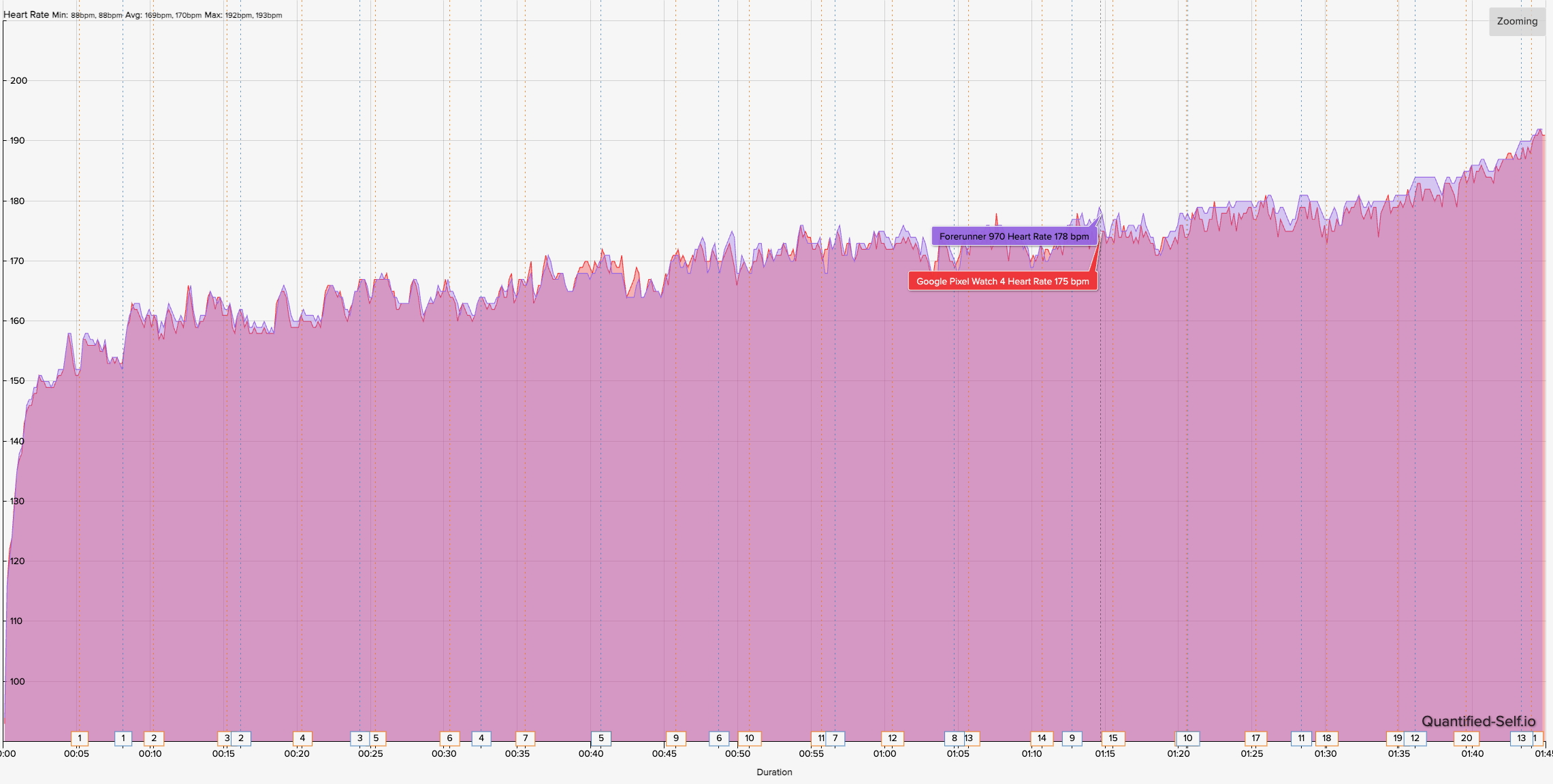
During my half-marathon, my Garmin paired with a COROS HRM armband consistently measured slightly higher than Google’s result, particularly when my HR rose above my lactate threshold into anaerobic levels. The graphs run in parallel, with Google always in the right range, but 1 bpm short.
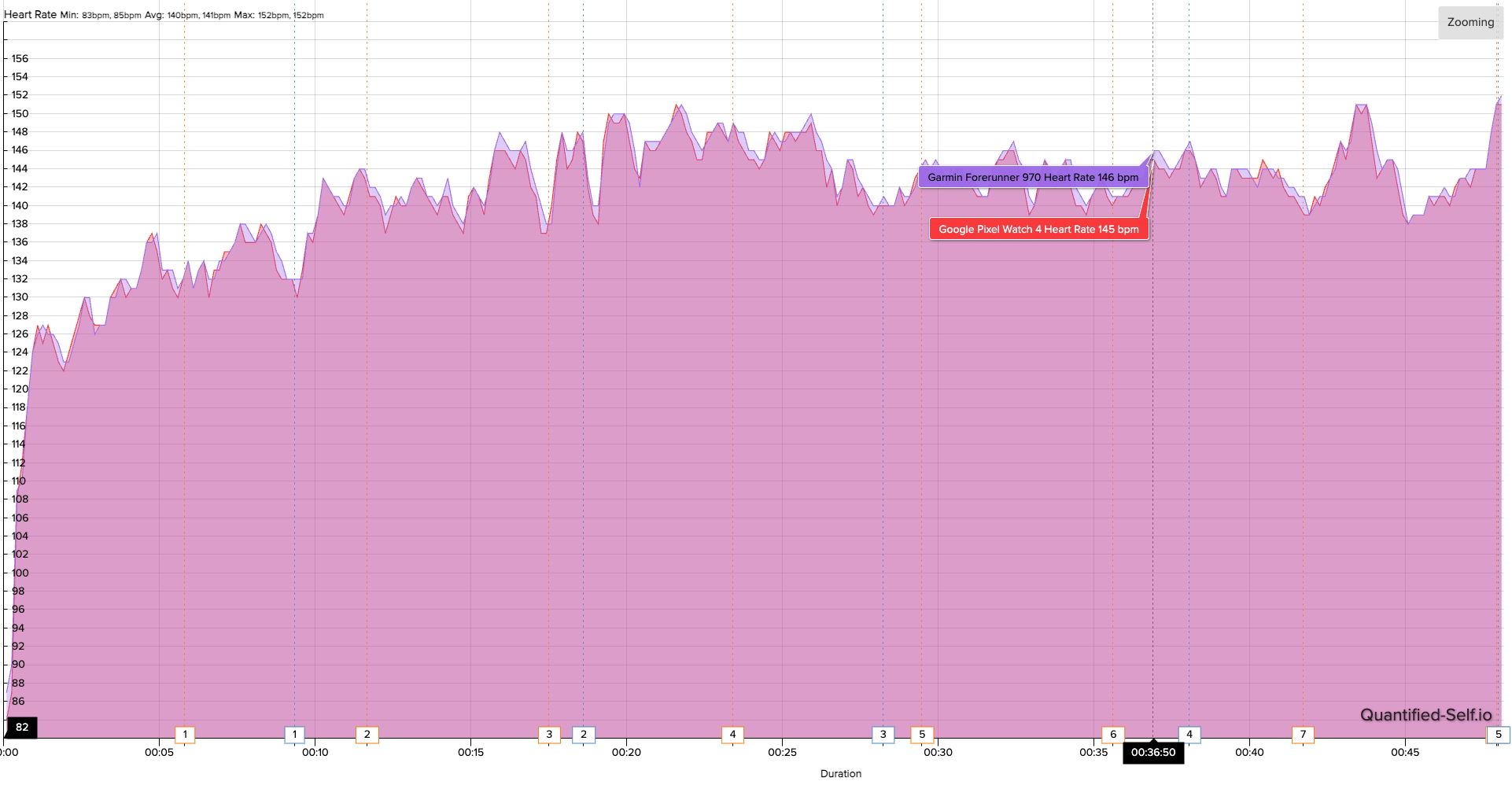
It’s normal for a wrist-based optical sensor to lag behind an arm or chest strap, but comparing the Pixel Watch 4 against Garmin’s 5th-gen Elevate sensor is fascinating. You can see how both watches respond to changes in effort at nearly the same time throughout a 40-minute run. Still, Google’s results are slightly deflated, once again 1 bpm short on average.
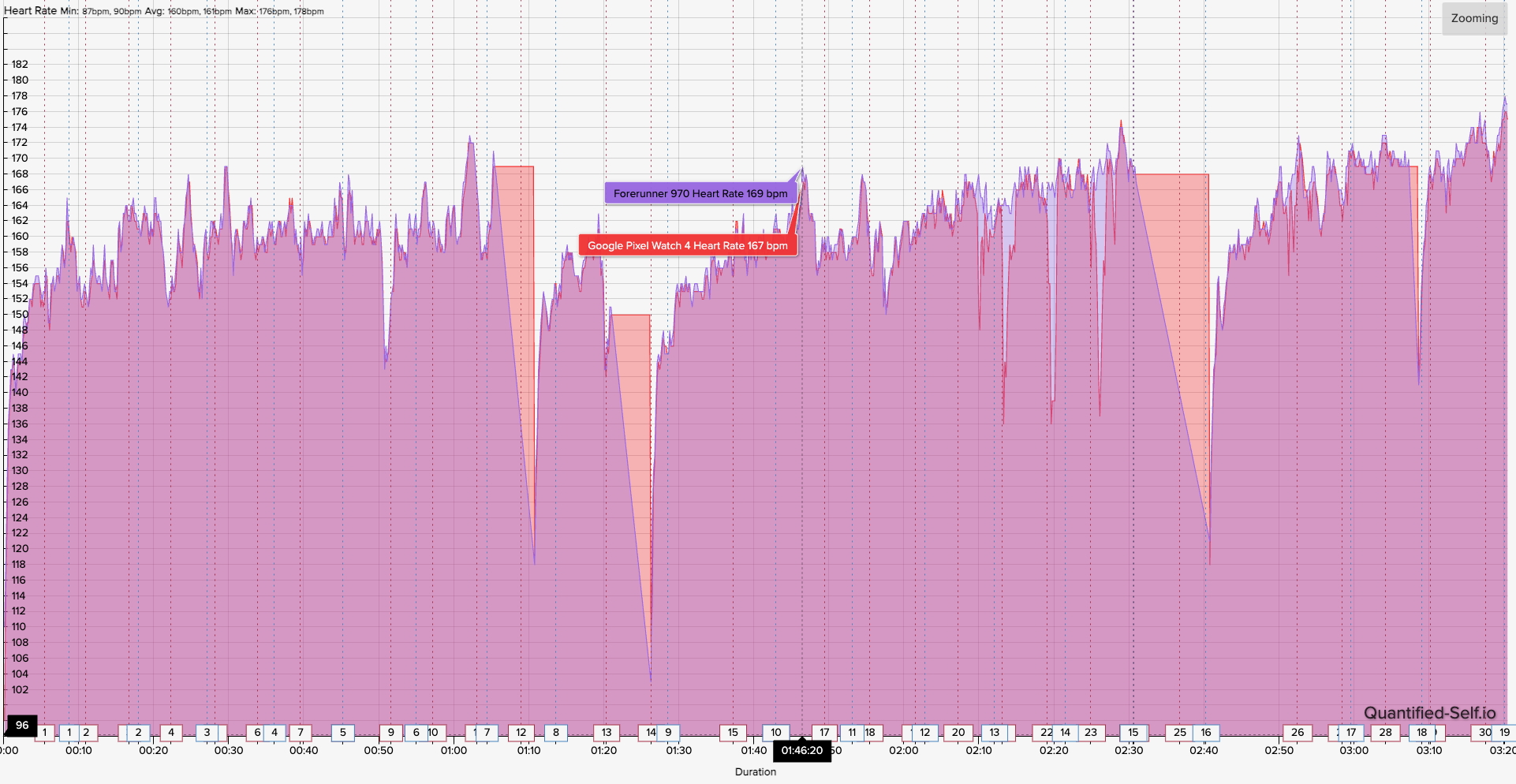
For my 19-mile run, I synced my Garmin HRM 200 chest strap to my Forerunner. You can ignore the three flat-line stretches; different watches handle paused workouts for water and bathroom breaks differently. Otherwise, you can see how the Watch 4 mostly keeps pace but still falls 1–2 bpm short during rapid changes. The final averages — Watch 4 with 161 bpm, HRM 200 with 162 bpm — were predictable at this point.
I gave the Pixel Watch 3’s HR accuracy a “B” grade last year, and I’d give them the same grade this year: good but not exceptional. The real problem is that Google doesn’t give people a way to improve their results, as Wear OS doesn’t support connecting to external HR monitors. That’s a deal-breaker for a lot of athletes!
Automatic activity detection
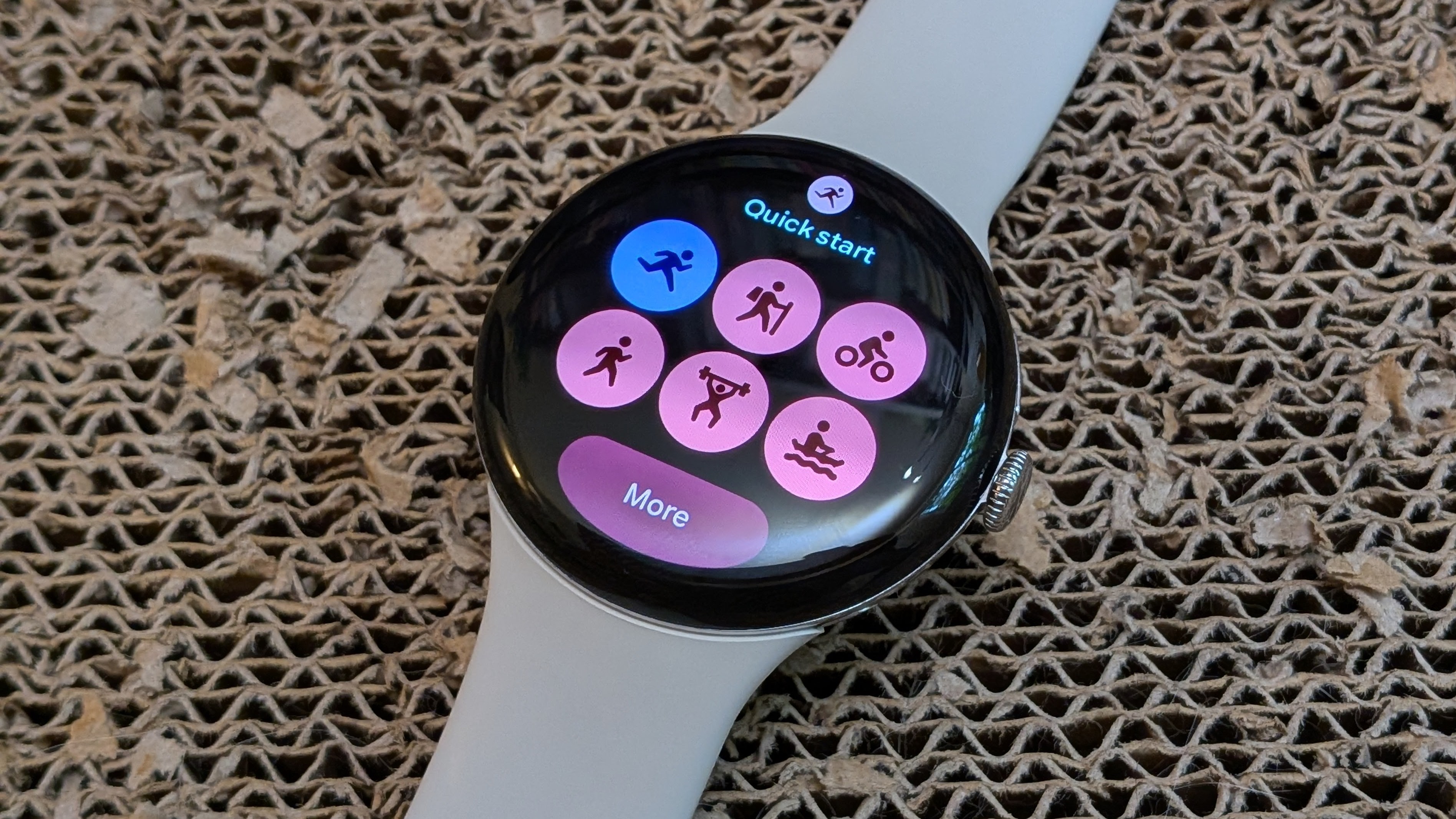
Google promises that its AI will “automatically detect and classify your activity and send you a recap” for activities like running, cycling, soccer, or using an elliptical. The Watch 3 would prompt you to confirm an activity mid-workout; now the Watch 4 asks after you’re done.
To test this feature, I ran four miles wearing my Pixel Watch 4 and Forerunner 970, only tracking it on the latter. When I finished, I sat on a bench for ten minutes to make sure Fitbit didn’t include any post-run walking in the activity.
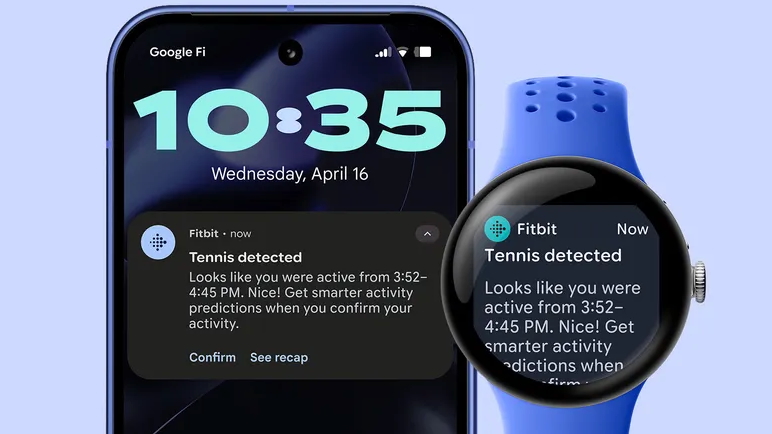
When I got home, I received a notification that I’d run for 39:53 — only four seconds off of Garmin’s duration — with a 142 bpm average (one below Garmin’s average, predictably). The only problem was that it measured 4.6 miles instead of 4.0; automatic activities don’t show a GPS map, so I don’t know what went wrong.
I’ve always appreciated that Fitbit Cardio Load gives you credit for all activities, not just the ones you log. I prefer to log every workout myself rather than rely on guesswork, but at least Google’s AI guesswork is pretty reliable (aside from GPS).
Step count and running form
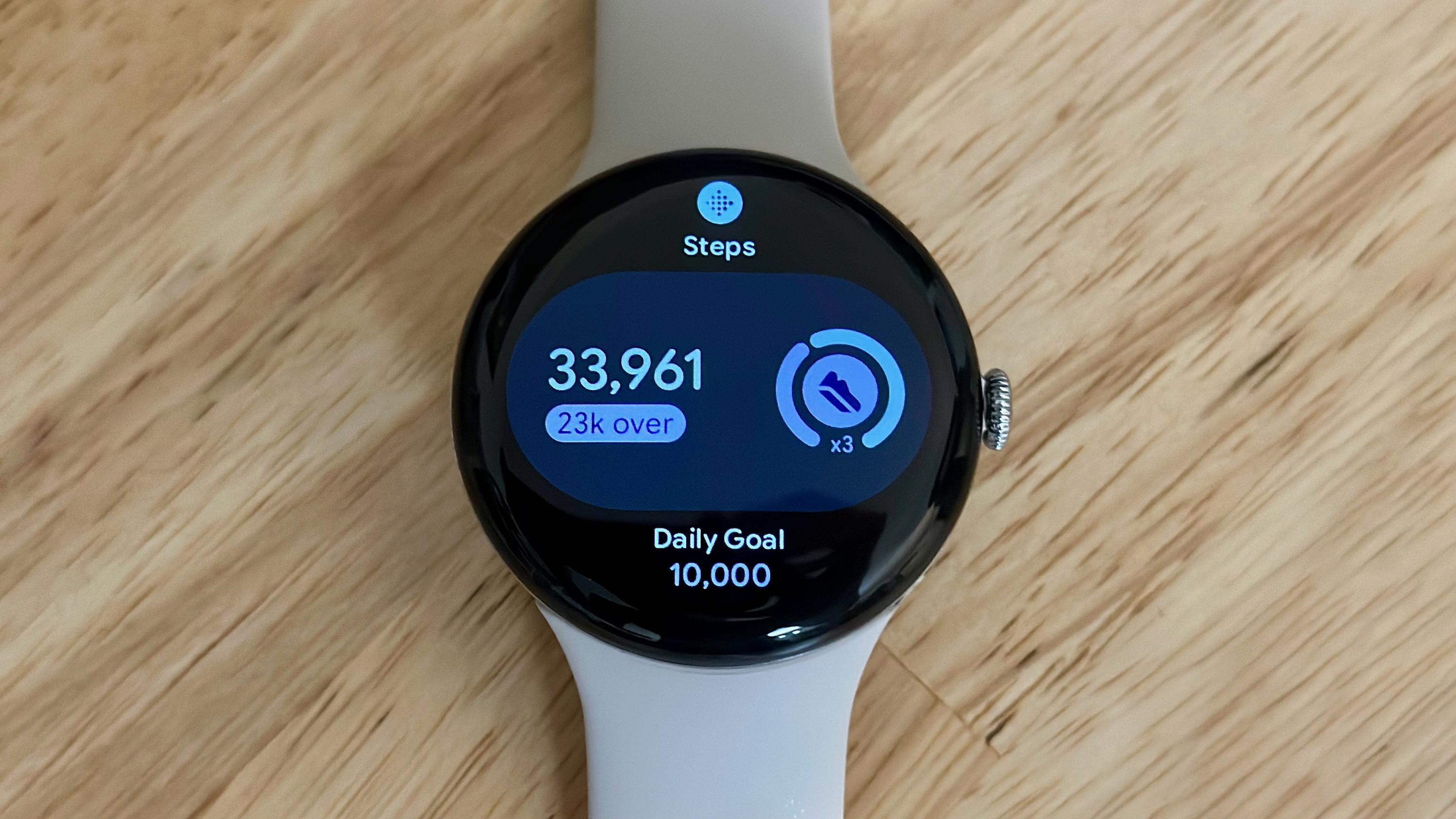
Google enhanced its step count algorithm for walking with a stroller or trekking poles in March, then reverted it in April because some users had inaccurate results. After that whiplash, we’re back where we started, and I’ve typically found that Fitbit step counts tend to fall slightly short of my actual numbers.
Someone would have to bribe me to count my steps during a half-marathon, but I found it interesting that my final step count on my Garmin (23,041) was significantly higher than on my Pixel Watch (21,852). For my 19-mile run, the gap was smaller (34,260 vs. 33,960), with Garmin still estimating more.
Both Garmin and Google analyze your running dynamics (or form) after a run. Each watch measured the exact same stride length for my 13- and 19-mile runs, while my cadence was either the same or 1 step per minute off.
For other stats like ground contact time and vertical ratio/oscillation, they diverge slightly, with Garmin suggesting my form is more efficient. When I wore three watches, COROS’s GCT and stride ratio numbers were closer to Garmin’s, so signs suggest Google’s running form numbers might be slightly conservative.
Where the Pixel Watch 4 matches, or falls short of, a Garmin watch for athletes
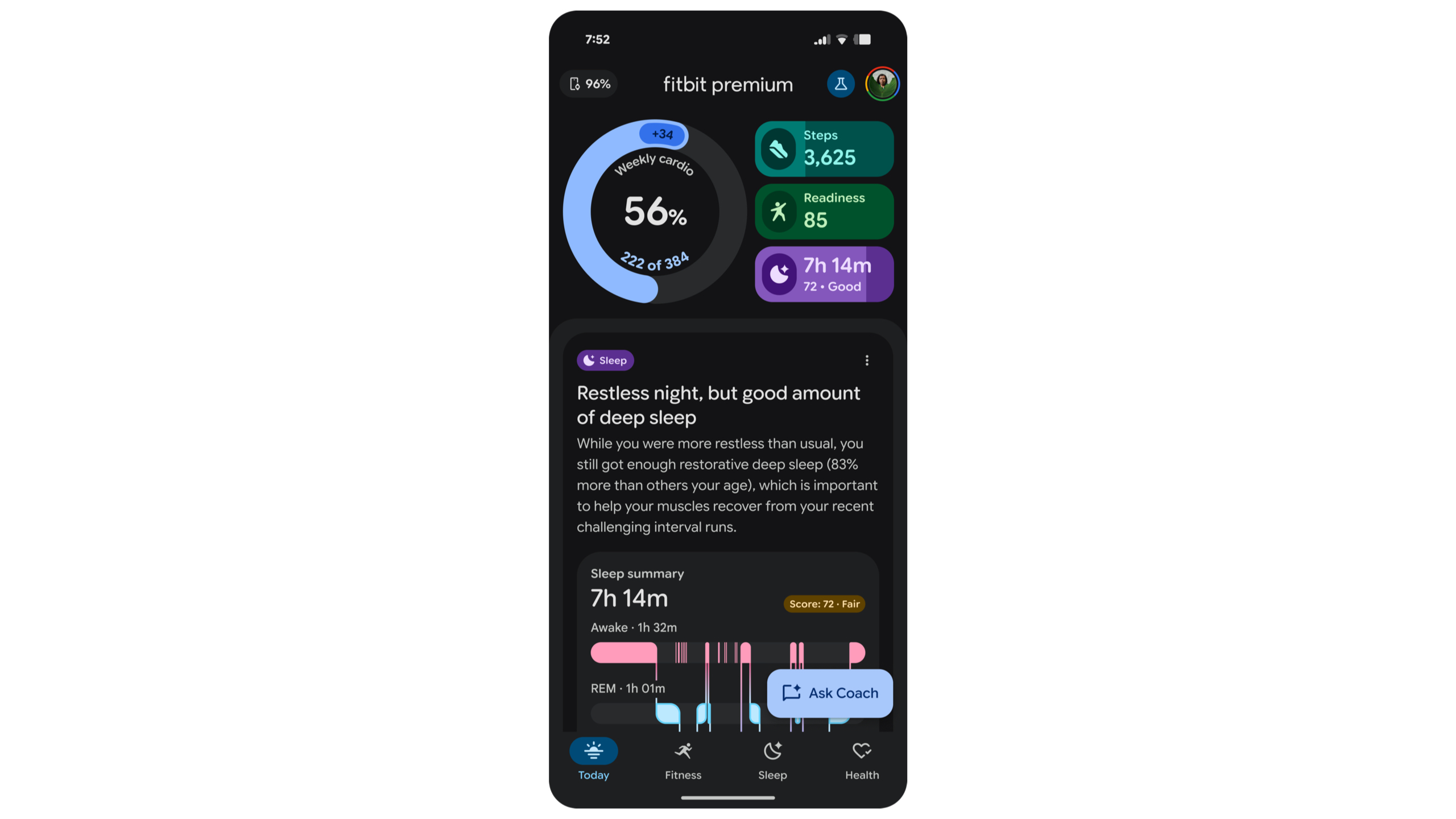
Google/Fitbit and Garmin have a long list of similar fitness, health, and safety features. Both offer training load data and show long-term trends and targets. Both have a morning report/brief showing your Body Battery/Daily Readiness, sleep score, weather, and exercise suggestions. Both let family members track your progress for safety: Garmin with LiveTrack and Google with Safety Check.
Google warns you in the morning if stats like HRV, RHR, skin temp, or SpO2 are outside your normal range; Garmin just introduced a similar feature, Health Status, on the Venu 4 and should bring it to other watches soon.
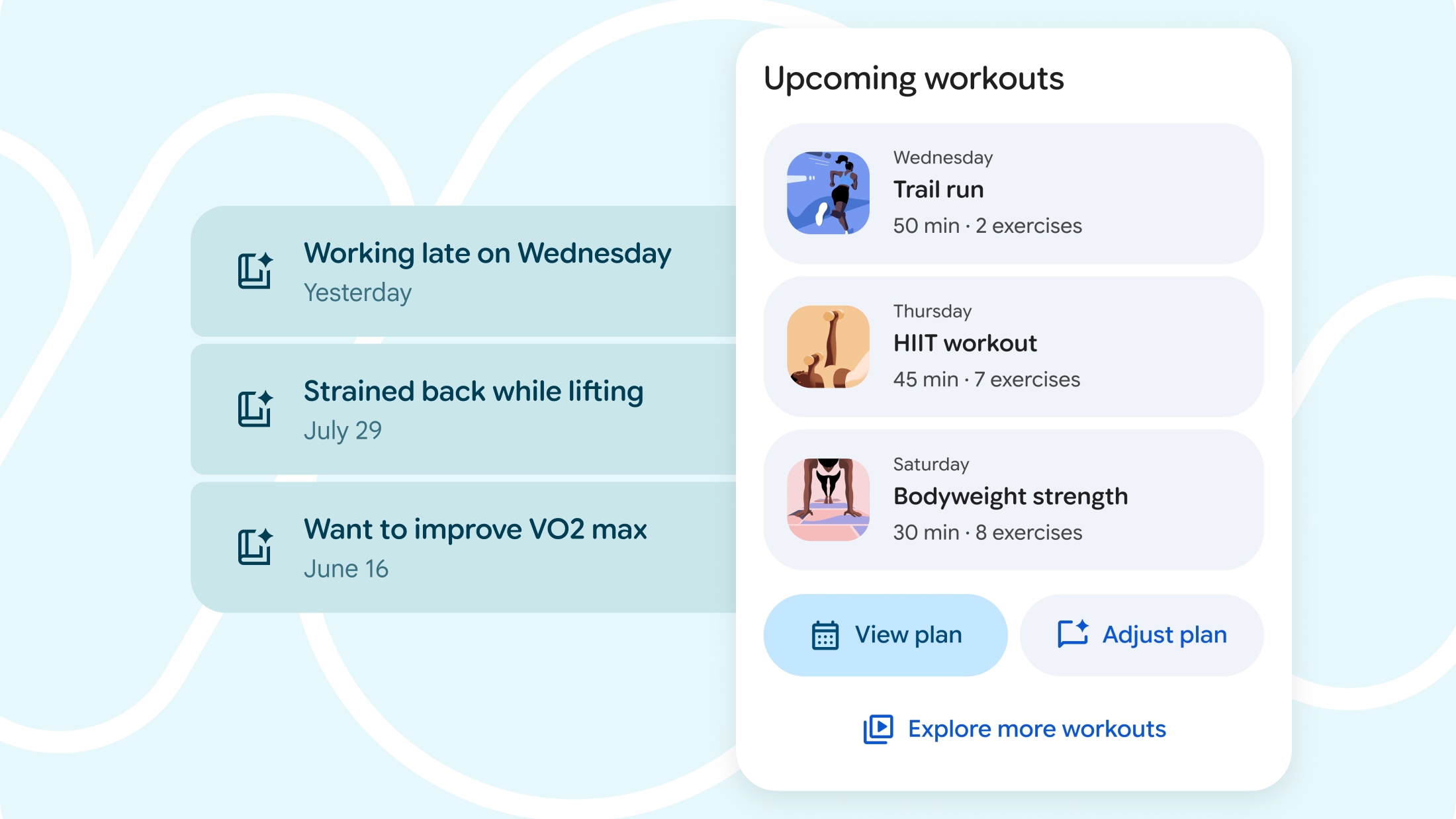
Garmin currently has the edge for training suggestions, with Garmin Coaching for running, cycling, strength training, triathlons, and multisport “fitness,” plus personalized daily workouts outside of structured plans. But the upcoming Fitbit AI coach should challenge Garmin with Gemini-made customized coaching plans that adjust based on your sleep quality, soreness, or if you tell Gemini you’re injured.
While Google has an edge for AI — it’s not controversial to say Gemini will be much smarter than Garmin’s Connect Plus AI, which only summarizes your stats using an LLM — it still falls short for other training basics.
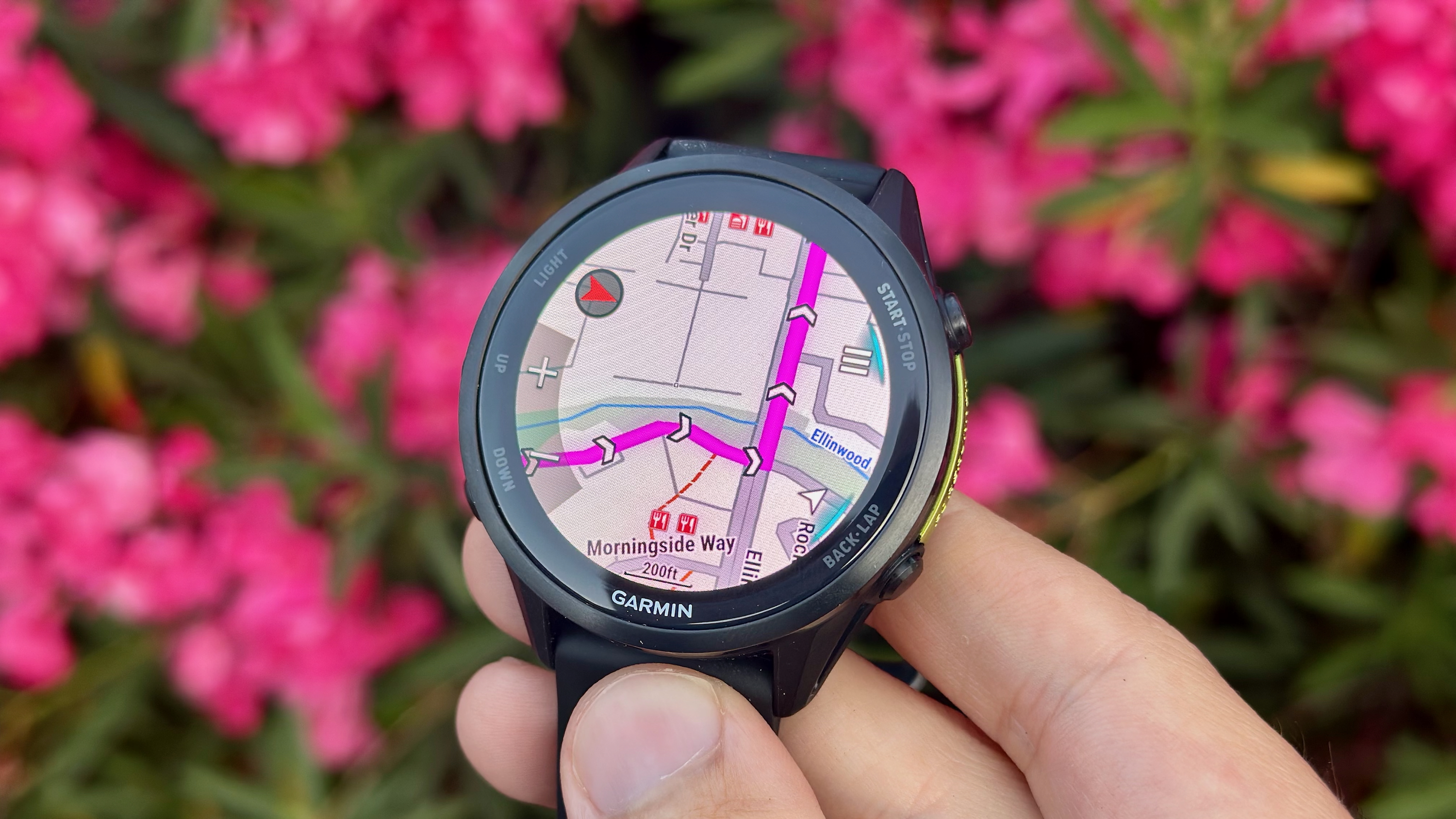
I’m still waiting for Google to use its Maps advantage for fitness. If Google let you create workout routes in Maps — with the option to use street view to make sure it’s safe for pedestrians or cyclists — and then upload them to your watch, that’d be fantastic.
Garmin’s maps and turn-by-turn navigation give you topographical details, nearby landmarks, and auto-correction if you go off-path. The only problem is, they’re quite laggy. If Google made its own equivalent, it would have the advantage of a proper Snapdragon processor.
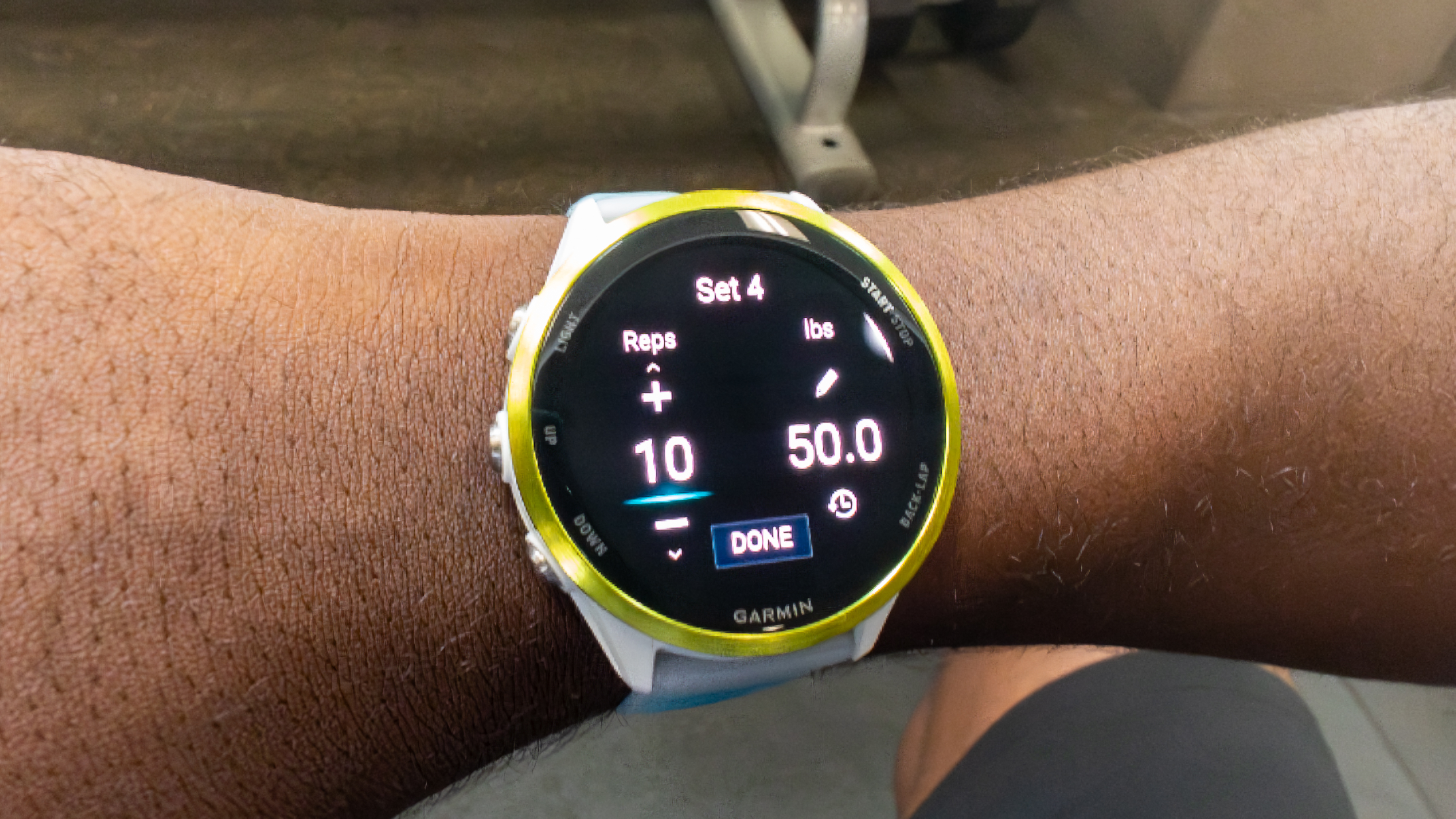
Many of my gym-loving colleagues are still waiting for Pixel Watches to add rep counting, and think the Pixel Watch is inferior to other brands for indoor workouts.
Fitbit, to be fair, has training videos from professional coaches, including Peloton workouts. And the new Gemini coach will suggest specific exercises in categories like HIIT and bodyweight exercises. That’s all well and good for Premium subscribers.
But the watch itself will only judge your strength workouts on basics like heart rate and calories burned, whereas Garmin tracks individual reps for each exercise type, such as bench presses. My colleagues would love to see Google add gym exercise categories, both for manual logging and automatic detection using the Watch 4’s gyroscope.
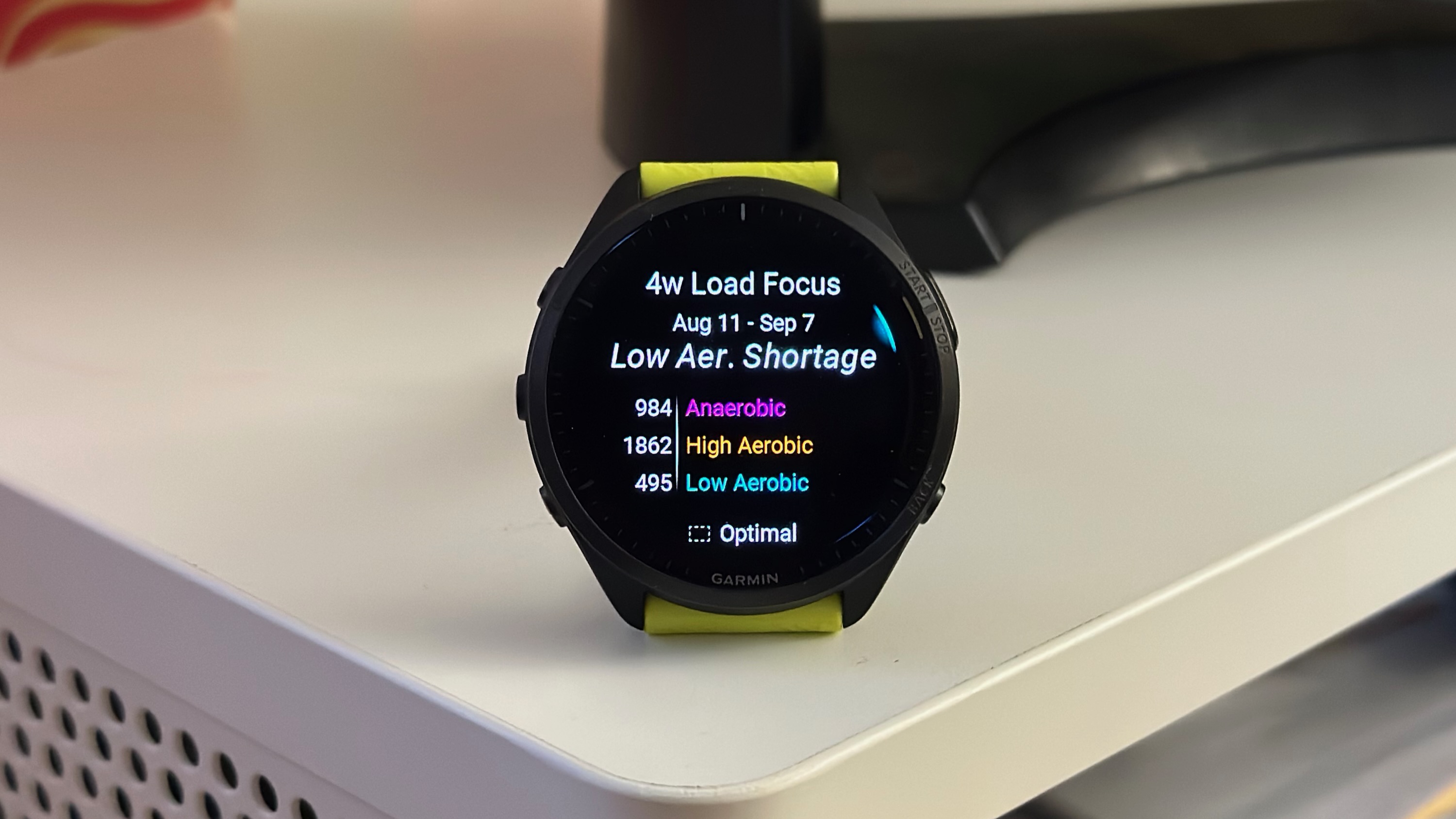
Google has a strong foundation of running metrics, but the Pixel Watch 4 still doesn’t have running power, race time predictions, aerobic/anaerobic training effect breakdowns, post-run recovery time suggestions, or dedicated activity modes for track or trail running.
During an actual run, the Pixel Watch 4 doesn’t take advantage of its gorgeous 3,000-nit display because the data shown on screen is extremely limited: Miles, duration, HR, pace, and time in the current HR zone. There’s no way to show any other information mid-workout, while Garmin has hundreds of custom data fields.
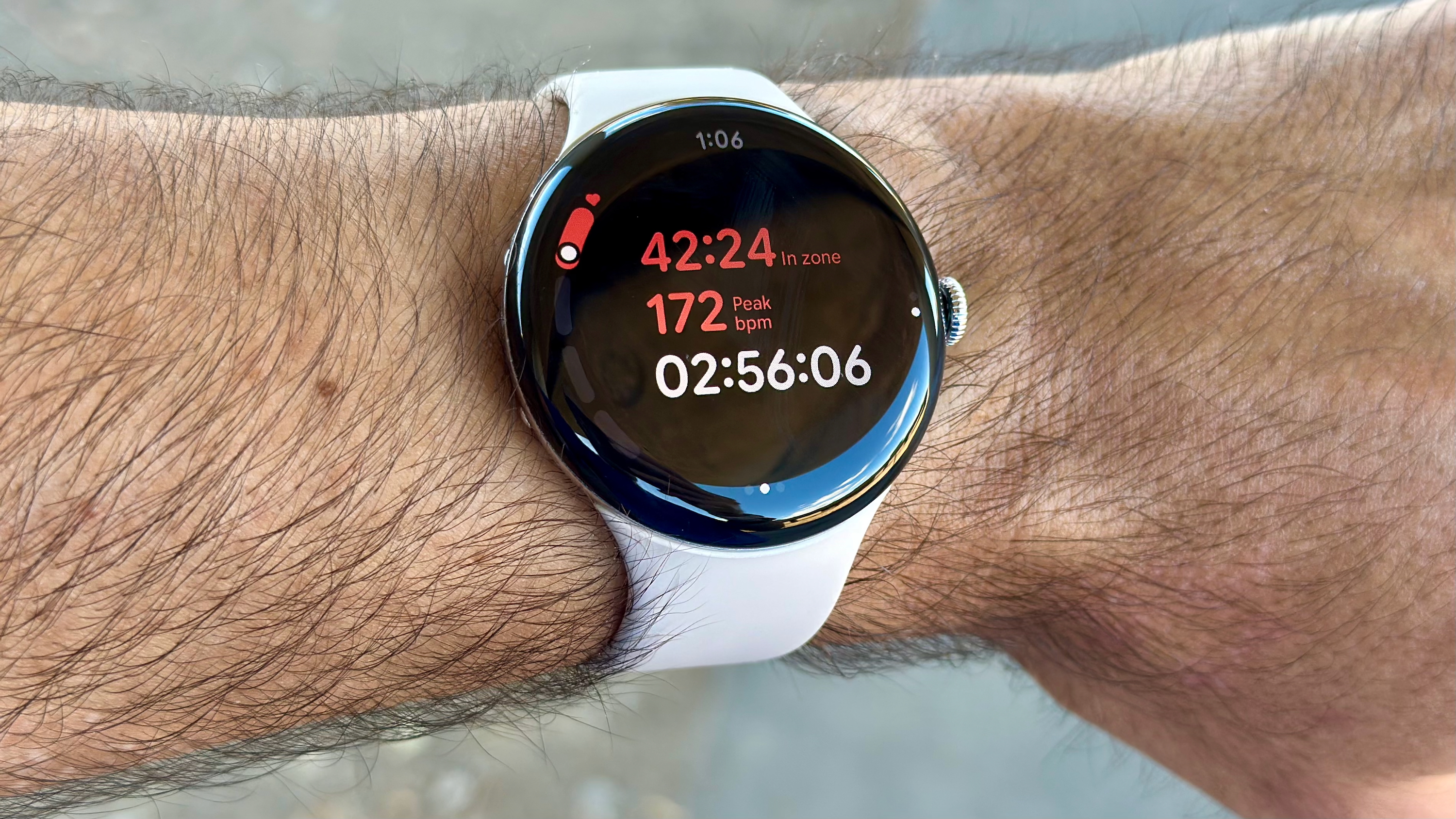
The Pixel Watch 4 can broadcast cycling stats on your phone mounted on your handlebars, but it can’t sync with power meters for FTP or show the upcoming climbs on your route. Nor will you find any triathlon modes or open-water swimming.
There’s also the fact that the Pixel Watch 4 only lasts about two days per charge and doesn’t have sapphire glass.
To the first point, its GPS tracking is efficient enough to handle any multi-hour race, then recharges fully in an hour or less; it’s just not built for all-day hikes or rides like Garmin. To the second point, you may decide to buy a bumper case/ screen protector as a precaution.
Overall, the Pixel Watch 4 is still missing some fundamentals that serious athletes need, and there’s no guarantee that the Pixel Watch 5 will prioritize niche use cases that don’t appeal to a wider audience. But Google is continuing to improve its fitness experience, and that’s something worth acknowledging.
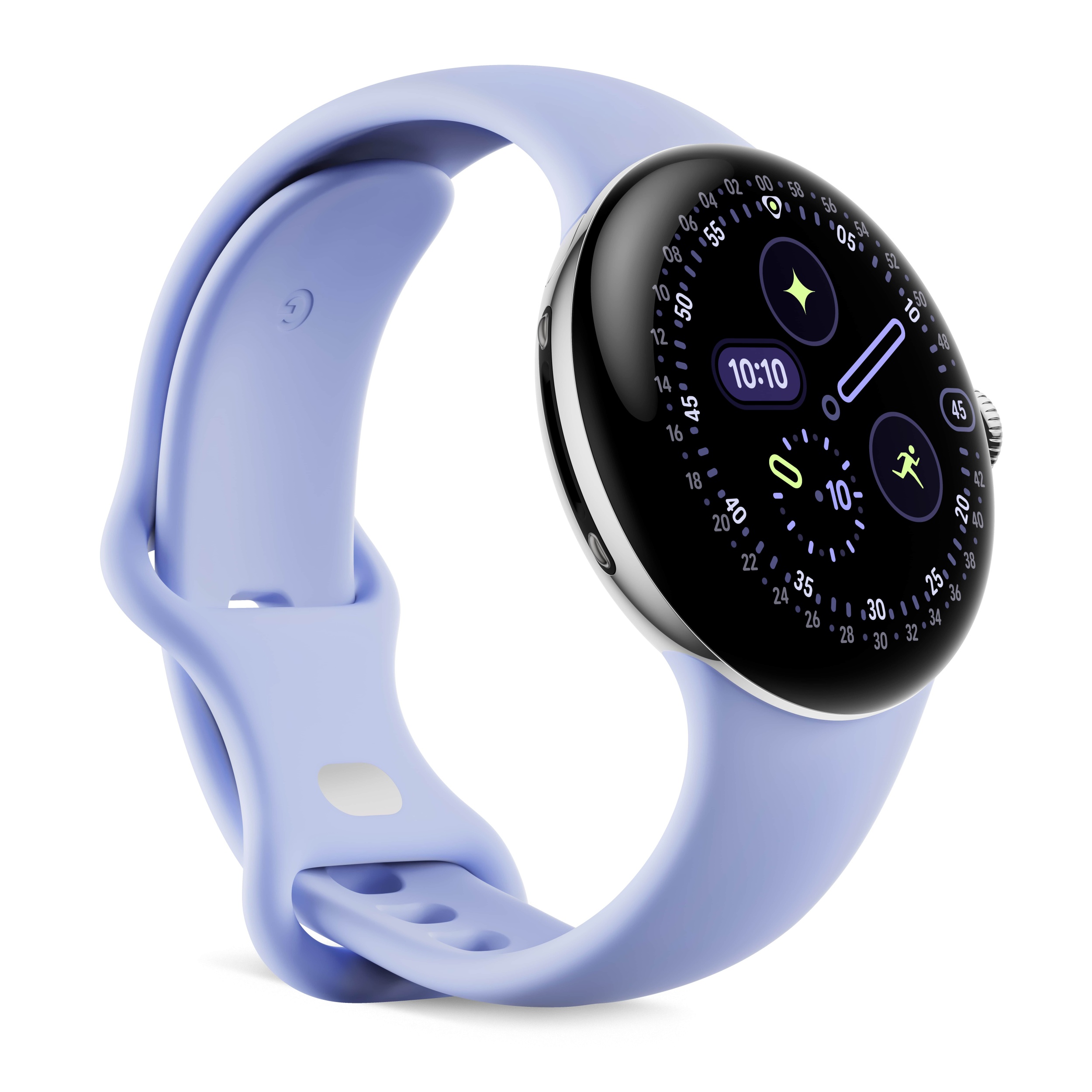
Sporty smartwatch for casual athletes
The new Pixel Watch 4 comes with six months of Fitbit Premium and supports third-party apps like Strava and Nike Run Club, so you can sync workouts directly with your favorite app. You also get smarts like Gemini Raise to Talk and direct messaging that Garmin can’t match, as well as a brighter AMOLED display, incredibly fast charging, and in-depth health and sleep trends.


